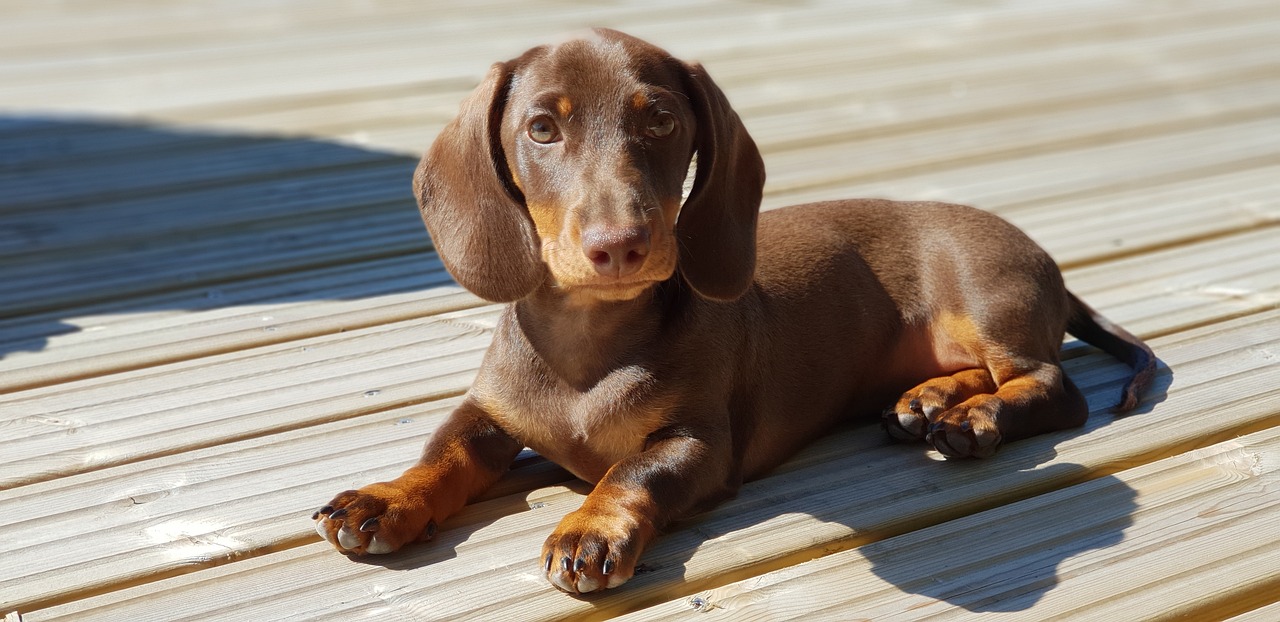The Dachshund, characterized by its unique and recognizable shape, is a dog breed steeped in history and purpose. These small, elongated canines, affectionately dubbed ‘wiener dogs’ in modern times, have roots dating back centuries. Let’s delve into the original roles and breeding purposes behind this captivating breed.
1. The German Origins of Dachshunds
The name “Dachshund” directly translates from German to “badger dog.” This etymology provides the most straightforward hint about their original breeding purpose. Hailing from Germany, Dachshunds were initially developed hundreds of years ago with a primary goal in mind: hunting. Their size, shape, and temperament were meticulously cultivated for this role.
2. Dachshunds as Fierce Badger Hunters
The primary role of early Dachshunds was to hunt badgers. Their slender, elongated bodies were ideal for burrowing into badger setts (tunnels) and dragging out this tenacious prey. Badgers are known for their strength and aggressive nature when threatened, so Dachshunds needed to be fearless and robust.
- Body Structure: Dachshunds possess a long spine and short legs, a combination that allows them to easily navigate through underground tunnels. Their loose skin also provided protection from badger bites and scratches.
- Temperament: For such a small dog, Dachshunds are incredibly brave. This trait was essential when facing badgers, ensuring that they could hold their ground and perform their job effectively.
3. Dachshunds in the Pursuit of Other Game
While badgers were the primary target, the hunting prowess of Dachshunds didn’t stop there. As the breed evolved, so did its hunting capacities.
- Above Ground: Larger variants of the Dachshund were also used in packs to chase game like wild boar. Their keen sense of smell and relentless pursuit made them valuable hunting companions.
- Other Burrowing Animals: Beyond badgers, Dachshunds were also used to hunt rabbits, foxes, and other burrow-dwelling animals. Their agile bodies and sharp instincts proved to be useful against a variety of prey.
4. Evolution of Dachshund Varieties
Recognizing the efficiency of the Dachshund in hunting tasks, breeders started developing different types of Dachshunds tailored for specific roles.
- Coat Variations: There are three main coat varieties in Dachshunds – smooth, long-haired, and wire-haired. The smooth-coated variety is the oldest, originally bred for its speed. Long-haired Dachshunds were believed to be crossbred with spaniels, providing them with a sleeker coat for warmth. Wire-haired Dachshunds, with their rough coat, offered protection in thorny or bushy terrains.
- Size Differentiation: Over time, Dachshunds were bred in different sizes to accommodate various hunting needs. Standard Dachshunds were the original size, but miniature Dachshunds were later developed for hunting smaller game, like rabbits.
5. Dachshunds in Modern Times
Though their hunting days are mostly in the past, modern Dachshunds haven’t lost their sharp instincts or brave temperament. Today, these traits manifest in playful, sometimes stubborn behaviors. Many Dachshund owners can attest to their dog’s penchant for burrowing in blankets— a nod to their ancestral tunneling tasks.
Still, the contemporary Dachshund is more commonly found living the comfortable life of a beloved pet rather than pursuing game. Their size and personality make them suitable for various living situations, from apartments to houses with yards.
Conclusion: The Dachshund’s Journey from Hunter to Companion
From their early days burrowing through the German countryside in pursuit of badgers to gracing our homes with their distinctive charm, Dachshunds have come a long way. While they may no longer be active hunters, understanding the historical context of their breeding provides a deeper appreciation for this unique and beloved breed. Whether they’re chasing a ball, burrowing in your bed, or simply lounging on your lap, the Dachshund remains a testament to the rich tapestry of canine history.
Frequently Asked Questions About Dachshund Breeding
1. What is the ideal age to start breeding a Dachshund?
Female Dachshunds should ideally start breeding between the ages of 1 and 2 years after a few heat cycles have passed. On the other hand, male Dachshunds should ideally start by 1.5 years to ensure physical and mental maturity.
2. How frequently can you breed a female Dachshund?
For the female Dachshund’s health and well-being, it’s advisable to breed her once a year at most. This interval gives her body ample time to recover between litters.
3. How many puppies can a Dachshund typically produce in a litter?
On average, a Dachshund will produce a litter consisting of 4 to 6 puppies. However, factors like the mother’s age, health, and genetics can affect this number.
4. What essential health checks should be conducted before breeding Dachshunds?
Dachshunds should undergo tests for prevalent genetic disorders in the breed, such as intervertebral disc disease (IVDD), progressive retinal atrophy (PRA), and patellar luxation. Routine veterinary examinations are also crucial.
5. What’s the typical gestation period for a Dachshund?
Dachshunds generally have a gestation period of around 63 days. However, this can range between 58 to 68 days depending on individual variations.
6. Can you explain the different coat varieties in Dachshund breeding?
Dachshunds exhibit three primary coat types: smooth, long-haired, and wire-haired. Understanding coat genetics is essential when breeding to predict the possible coat types of the offspring.
7. Are there specific size classifications in Dachshund breeding?
Yes, Dachshunds are typically classified into two main sizes: standard and miniature. These classifications are based on the dog’s weight and, in some standards, by the chest circumference.
8. How can breeders ensure good temperament in Dachshund puppies for families?
Promoting a stable temperament in Dachshund puppies involves early socialization, and exposure to diverse environments, people, and sounds during their formative weeks. Breeding dogs with well-balanced temperaments also increases the likelihood of friendly offspring.
9. Why is pedigree important in Dachshund breeding?
A detailed pedigree offers valuable information about a Dachshund’s lineage and any potential genetic health risks. It ensures responsible breeding practices and helps prevent detrimental inbreeding.
10. How can one identify a responsible Dachshund breeder?
A trustworthy Dachshund breeder prioritizes the dogs’ health over profit. They offer health clearances, exhibit deep knowledge about the breed, have specific breeding goals, and provide continuous support to puppy buyers.
Benefits of Adopting a Dachshund from a Rescue or Shelter
Choosing to adopt a Dachshund from a rescue or shelter is a noble act that provides a loving home to a dog in need. Rescued Dachshunds often come with some prior training and are keen to connect with their new families. Through adoption, you play a role in mitigating pet overpopulation and diminishing the demand for puppy mills. Moreover, the gratitude and loyalty shown by adopted Dachshunds make them incredibly affectionate companions.









